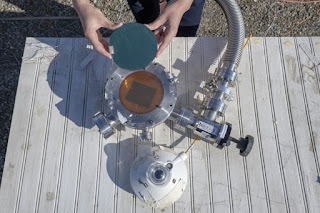2019 - Year of the Hypersonics

Cooling Hypersonic Vehicles Source: DARPA Hypersonic Concept Vehicle DARPA's MACH Program The big challenge with hypersonic jets is to keep them cool as they reach a speed of Mach 5 and above. The US Defense Department's Advanced Research Projects Agency - DARPA - has declared 2019 the year of hypersonics. DARPA is pursuing new materials and designs for cooling the hot, leading edges of hypersonic vehicles as they accelerate to hypersonic speeds. New Architecture, Materials and Design for Heat Management The new program is called MACH - Materials, Architecture and Characterization for Hypersonics (MACH) program. DARPA wants totally new, breakthrough technology, not evolutionary improvements on existing technology. Decades of Trying Effective cool down of the hypersonic vehicles at Mach 5 and above is the key factor between success and disaster. The DARPA MACH programs kicks off in late January 2019. According to DARPA Program Manager Bi...
